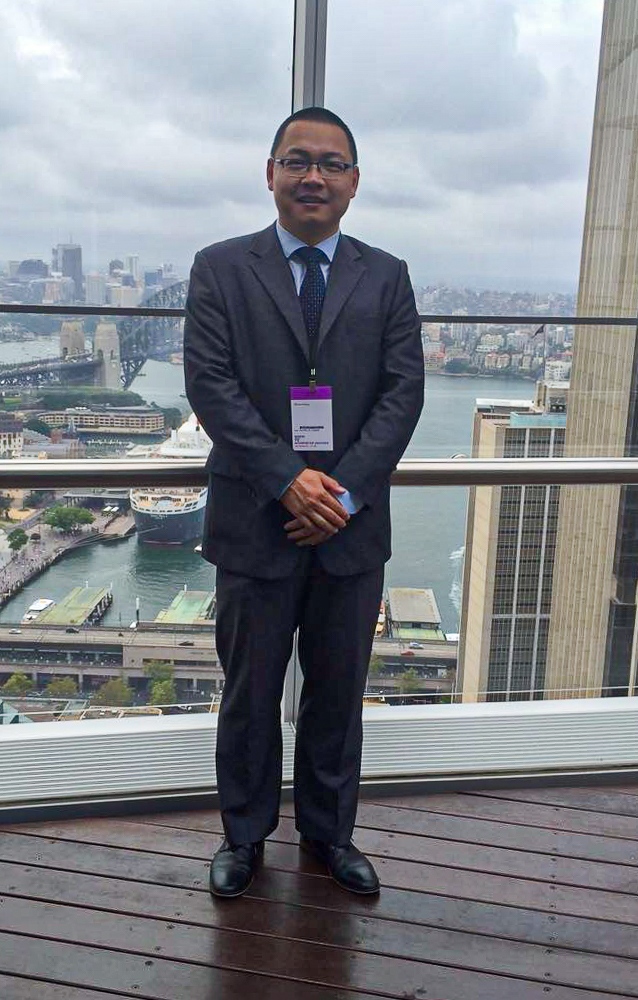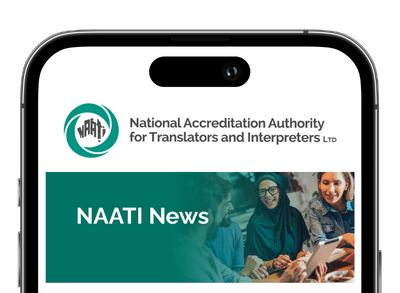Shiyi Ye is a NAATI Certified Conference Interpreter and Translator; has been a freelance interpreter and translator in Sydney since 2007; and has been teaching the Translation and Interpreting program at Macquarie University in Sydney since 2008.
My sincere appreciation goes to NAATI for this opportunity. I think I should share my experience as a student, a practitioner and later a teacher, as I have been wearing these hats for a while, and what I experienced might be a helpful reference for colleagues.
It was after the scorching Summer of 2003 that I embarked on the journey in this fascinating profession. At that time, I had just earned my Bachelor’s degree in English, an interpreting credential, and some experience in the field thanks to some rigorous training in translation and consecutive interpreting that I received from my university and beyond.
My first full-time job was as an in-house translator in a local translation firm, where I primarily translated technical documents such as bidding documents and engineers’ reports – quite a daunting but fulfilling experience for someone coming from a foreign language background, as I had to earnestly acquire knowledge in many fields that I had only heard of, such as rolling stock, automotive gearshift and remote sensing.
Outside the 9 to 5 routine, I continued to moonlight at a private company, which later took on the name, Transemantix, teaching on a training program on liaison and consecutive interpreting, a job I had been doing since my last year in college; which later took me to my next step. This program was sought after by many students who aspired to establish themselves in a respected and well-remunerated career. Back in those days, technology and applications that we are well acquainted with now, such as YouTube, Smart Pen and remote interpreting training platforms, had yet to become a reality. My colleagues and I had to make every effort to meet the needs and expectations of the students while trying to address various pedagogical and logistical issues to make the training program practical and viable.

During this period, I also did some interpreting assignments, including for a visiting delegation on pollution control and sewage disposal. That assignment indelibly left a word in my mind: preparation. To prepare for a one-and-a-half-day meeting, I spent about three days preparing myself; not to mention bringing with me a notepad full of handwritten notes and glossary. Not long after that, I was selected to join a team of four simultaneous interpreters for a forum on tertiary education that my university was going to host for vice-chancellors and presidents from some 30 universities from China and abroad. Having not done anything like that previously, I believe the whole team had all the support and guidance that could be asked for. A senior interpreter, organised by the University’s Office of International Affairs, provided us with crash-course training and guidance throughout the event. Many speakers sent in their speech papers in advance, in some cases in bilingual format; while some speakers even opted to speak in their second language and relatively slowly, all conditions that are uncommon but which made the interpreting assignment barely manageable. Thanks to the team effort and long hours of preparation and rehearsal, the event turned out to be a success. However, I was keenly aware that, as assignments with such conditions are a rarity, I must undertake professional training to survive such assignments in the future.
Early in 2004, Transemantix decided to relocate to Beijing and made me an offer of being a translator, interpreter and trainer in the new structure. At that time, I had already decided to pursue postgraduate studies overseas, having realised that I would benefit much more by immersing myself in an English-speaking country to boost my second language; I had no idea I would soon be making my way Down Under. I considered the job offer an excellent opportunity to gain more work experience and to pay my way. As I expected, a new start means new opportunities. I had the privilege of working in more diverse subject areas; and more importantly, I got to observe at a close distance how senior colleagues work.
In the coming Summer (again), at a new product release event where I was assigned by the Company to interpret for media interviews, I observed in person for the first time stunning simultaneous interpreting performance by the Chief Interpreter of the Company. I should confess that I had never thought simultaneous interpreting could be done so stylishly. Shortly after that, I learned through my network that Macquarie University in Sydney, was going to open for enrolment a new postgraduate program called the Master of Conference Interpreting (MCI); and like many of my fellow students, I went through the process of application, interview and visa before my flight touched down at Kingsford Smith Airport.
After the two years of postgraduate training at Macquarie, I started exploring what would await me in the market. A notable difference has been that, unlike in the Chinese market where business interpreting opportunities abound, community interpreting is a far more considerable component in the Australian market. I hence had the opportunity to visit various places besides conference rooms and boardrooms, such as schools, police stations, courthouses, and triage desks and wards in hospitals.
After I had freelanced for a year, the convener of the MCI program asked me if I can come once a week to give tutorials to MCI students. I was so pleased that I could continue doing what I love to do. I enjoy teaching very much, though occasionally I felt a bit overwhelmed by some repetitive work. To me, teaching is more of a mutual learning process; i.e. while I can share my knowledge, skills and techniques with students, they can sometimes lend unique perspectives. As a personal motto, I believe education is much more than preparing students for any particular task in their chosen field(s), but is enabling the best out of them and in turn making critical thinkers and reflective practitioners. To achieve that within the discipline of conference interpreting, I consider it imperative not only to observe, to diagnose, to evaluate and to motivate, but more importantly to share with students real work experience, where permitted. The sense of “being there” – be it rendering stories and fables narrated at meetings to allude to the reality, getting stuck by a word uttered by a delegate while on an education tour assignment, or even being called to interpret a toast at dinner party unexpectedly after two stubbies of Peroni – not only brings up a practitioner’s insight but also serves to massage and freshen the young minds, especially after some tiring but necessary practice sessions.
Over the years, I have had the honour and privilege of working with some of Australia’s finest interpreters, whose professionalism and expertise continues to impress me and motivates me to forge ahead. I am also grateful for the opportunity to teach different units in the Translation and Interpreting Program at Macquarie, which grew my interest in various pedagogical principles and their application in different settings. By recommendation of my mentor, I set out to read for a Master’s degree in interpreter training (MAS) with the University of Geneva in Switzerland, a professional development course for practising interpreters wishing to upskill themselves on conceptual, methodological and strategic issues in interpreter training. This turned out to be quite a sensible decision, as the course not only enriched my knowledge bank of various concepts, strategies and theoretical models but also enabled networking with some wonderful colleagues from all over the world. I am grateful for my trainers from Geneva for the rewarding journey, as I continue to benefit from what I learned from MAS.
Lastly, may I add a note on COVID-19 and its implications. The UN Secretary-General Antonio Guterres described the COVID-19 crisis as a human tragedy, which has also created a generational opportunity to build back a more equal and sustainable world. Needless to say, the work pattern, let alone daily routine, of conference interpreters around the world has been severely disrupted by the pandemic. Still, it would be almost impractical to revert to past comforts.
Those who understand the Chinese language would know well that, in Chinese, the word “crisis” is written in two characters signifying “danger” and “opportunity”. As we observe physical distancing and exercise contact tracing among many other things, we are addressing the “danger” within our power; at the same time, we have been taking on the “opportunity” as well. Having spoken with many colleagues during the lock-down, I was surprised that the things we are all doing these days are quite similar. One of these is to catch up with the backlog of reading that has been ambitiously committed to, which kept being pushed back due to work with higher priority or, in my case, procrastination. Many of us have also been busy upskilling ourselves: attending various professional development events; picking up daily practice at home; and gearing up for remote simultaneous interpreting (RSI).
Representatives from professional associations including AUSIT and language service providers here in Australia have both signalled that RSI is here to stay in parallel with the traditional on-site interpreting solutions in the post-pandemic era. I believe we practitioners ought to seize the opportunity unseen in years and equip ourselves to serve clients who require our service from our own comfortable spaces.
